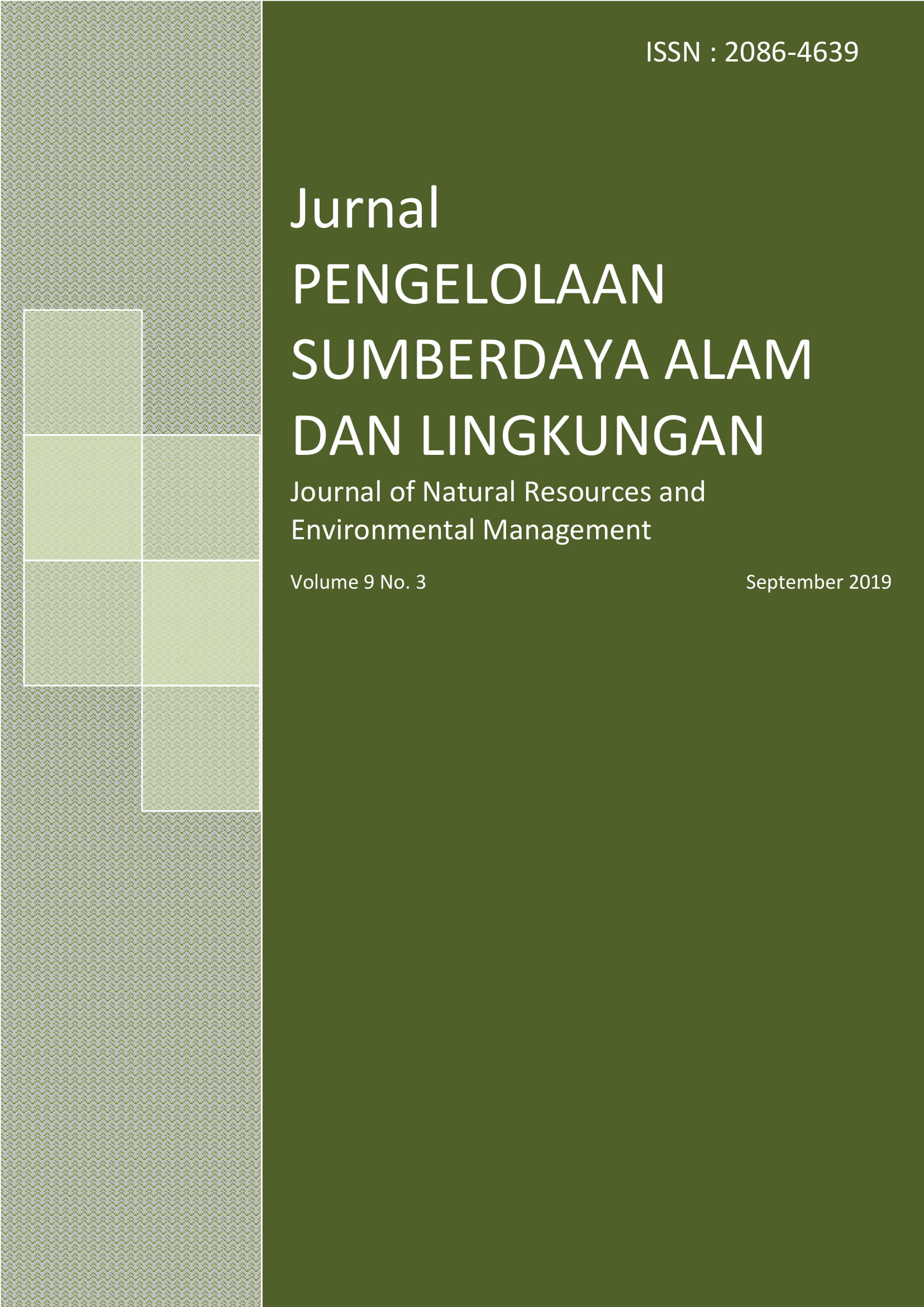Metode Pengaturan Hasil Berdasarkan Jumlah Pohon dalam Pengelolaan Hutan Rakyat pada Tingkat Pemilik Lahan
Abstract
References
Ani S, Aminah H. 2006. Plantation timber of Maesopsis eminii. Jurnal of Tropical Forest Science. 18(2): 87-90.
Darusman D, Hardjanto. 2006. Tinjauan ekonomi hutan rakyat. Prosiding Seminar Hasil penelitian Hasil Hutan. 4–13.
Florido HB, Mesa PB. 2001. Maranggo (Azadirachta excels (Jack) Linn.). Research Information Series on Ecosystem. 13(3): 1–10.
Hardjanto. 2017. Pengelolaan Hutan Rakyat. Bogor: IPB Press.
Indrajaya Y. 2013. Penentuan daur optimal hutan tanaman sengon (Paraserianthes falcataria (L). Nielsen) dengan metode Faustman. Jurnal Penelitian Agroforestry. 1(1): 31–40.
Indrajaya Y, Siarudin M. 2013. Daur finansial hutan rakyat jabon di Kecamatan Pakenjeng, Kabupaten Garut, Jawa Barat. Jurnal Penelitian Hutan Tanaman. 10(4): 201–211.
Jariyah NA, Wahyuningrum N. 2008. Karakteristik hutan rakyat di Jawa. Jurnal Penelitian Sosial dan Ekonomi Kehutanan. 5(1): 43–56.
Karminarsih E. 2012. Unit Pengelolaan Hutan Rakyat Lestari Skala Kecil: Kasus di Kecamatan Cikalong, Kabupaten Tasikmalaya, Jawa Barat. Disertasi. Bogor: Sekolah Pascasarjana, Institut Pertanian Bogor.
[Kemenhut] Kementerian Kehutanan. 2012. Statistik Kehutanan Indonesia 2011. Jakarta: Kementerian Kehutanan Republik Indonesia.
Krisnawati H, Varis E, Kallio M, dan Kanninen M. 2011. Paraserienthes falcataria (L.) Nielsen: Ekologi, Silvikultur dan Produktivitas. Bogor: CIFOR.
[LP IPB] Lembaga Penelitian IPB. 1990. Sistem Pengelolaan Hutan Rakyat. Lembaga Penelitian Institut Pertanian Bogor, Bogor.
Michon G. 1983. Village-forest garden in West Java. International Council for Research in Agroforestry, Kenya.
Mulyana D, Asmarahman C, dan Fahmi I. 2011. Panduan Lengkap Bisnis dan Bertanam Kayu Jabon. Jakarta: PT AgroMedia Pustaka.
Pratamaningtyas SNH. 2013. Kemampuan anggota kelompok dalam pengelolaan hutan rakyat di Desa Tegal Waru, Kabupaten Bogor, Provinsi Jawa Barat. Tesis. Bogor: Sekolah Pascasarjana, Institut Pertanian Bogor.
Riyanto HD, Pamungkas BP. 2010. Model pertumbuhan tegakan hutan tanaman sengon untuk pengelolaan hutan. Tekno Hutan Tanaman. 3(3): 113–120.
Sainudin, Fauziyah E. 2015. Karakteristik hutan rakyat berdasarkan orientasi pengelolaannya: Studi kasus di Desa Sukamaju, Ciamis dan Desa Kiarajangkung, Tasikmalaya, Jawa Barat. Pros. Sem. Nas. Masy. Biodiv Indon. 1(4): 696–701.
Varis E. 2011. Stand growth and management scenarios for Paraserianthes falcataria smallholder plantations in Indonesia. Tesis. Helsinki: University of Helsinki.
Widiarti A, Prajadinata S. 2008. Karakteristik hutan rakyat pola kebun campuran. Jurnal Penelitian Hutan dan Konservasi Alam. 5(2): 145–156.
Yuniarti N, Bramasto Y, Jam’an DF, dan Sudrajat DJ. 2016. Teknologi Perbenihan 10 Jenis Tanaman Hutan Andalan. Bogor: PT Penerbit IPB Press.
Authors
Authors who publish with this journal agree to the following terms:
- Authors retain copyright and grant the journal right of first publication with the work simultaneously licensed under a Creative Commons Attribution License that allows others to share the work with an acknowledgement of the work's authorship and initial publication in this journal.
- Authors are able to enter into separate, additional contractual arrangements for the non-exclusive distribution of the journal's published version of the work (e.g., post it to an institutional repository or publish it in a book), with an acknowledgement of its initial publication in this journal.
- Authors are permitted and encouraged to post their work online (e.g., in institutional repositories or on their website) prior to and during the submission process, as it can lead to productive exchanges, as well as earlier and greater citation of published work (See The Effect of Open Access).






